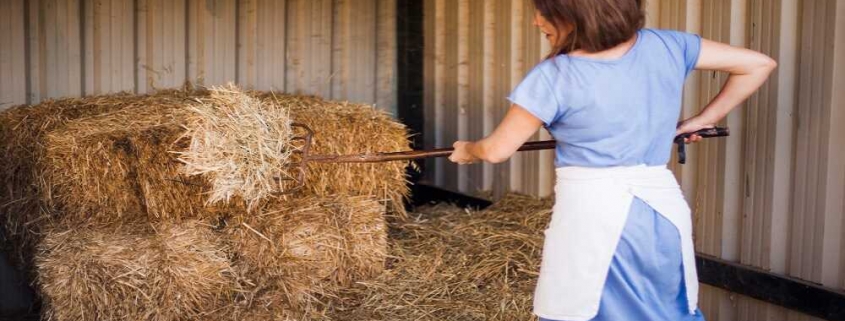Forage Feed Market is estimated to grow at a CAGR of 2.29% to reach US$40.723 billion by 2029
The forage feed market is expected to grow at a CAGR of 2.29% during the forecasted period, with a market valuation of US$34.757 billion in 2022 and is expected to reach US$40.723 billion by 2029.
The growth of the forage feed market has been driven by factors such as the rising number of livestock, heightened research and development funding from both government and private sectors, and advancements in forage feed technology.
As per the report, the forage feed market is expected to grow significantly.
Forages refer to edible parts of plants, excluding separated grains, which are used as feed for grazing animals or can be harvested for feeding livestock. They play a crucial role in the beef cattle industry and contribute to enhancing crop diversity, wildlife habitats, and soil ecosystem services. When selected and managed appropriately, forage feed can be a valuable resource for farmers due to its high productivity and nutritional value during its early growth stages. Addressing pest issues is essential to mitigate any negative impacts on productivity. Maximizing the productivity of forage feed necessitates careful planning of grazing strategies. For example, forage feed can be grown specifically for producing hay or silage, or it can be grazed initially before being conserved for fodder. Forages have deep roots that can improve soil organic matter content and serve as a rich source of vitamins, fiber, and proteins, benefiting animal metabolism. In September 2023, MAS Seeds introduced a fresh selection of forage mixtures and customized blends, featuring the inclusion of “MAS4 NUTRI” forage, which is abundant in legumes and aimed at enhancing animal nutrition. These new releases are part of the company’s initiative to expand its range of agronomic solutions for farmers.
The forage feed market encompasses various types of feed options, including pasture, hay, silage, and haylage. Pasture refers to grazing land where animals can feed directly on grass and other vegetation. Hay is dried grass or legumes, typically harvested and stored for later use as animal feed. Silage involves the fermentation of green fodder, such as grass or maize, in airtight conditions to preserve its nutritional value. Haylage is similar to silage but is typically made from higher moisture content grass, which is also stored in airtight conditions to ferment. These different types of forage feed provide farmers with diverse options to meet the dietary needs of their livestock throughout the year, ensuring a consistent and balanced supply of nutrients for healthy animal growth and productivity.
The forage feed market caters to various categories of animals, including ruminants, poultry, and swine. Ruminants, such as cattle, sheep, and goats, have specialized stomachs capable of digesting fibrous plant material like grass and hay. Poultry, including chickens, turkeys, and ducks, require a balanced diet consisting of grains, seeds, and forage to support their growth and egg-laying capabilities. Swine, or pigs, thrive on a diet that includes a mix of grains, forage, and protein-rich feed. Each animal category has specific nutritional requirements, and the forage feed market offers a range of products tailored to meet these needs. Whether it’s providing fiber-rich grasses for ruminants, balanced grains for poultry, or protein supplements for swine, the forage feed market plays a crucial role in supporting the health and productivity of various livestock species, contributing to sustainable and efficient agricultural practices.
The forage feed sector is poised for growth in the Asia Pacific region due to increasing demand for dairy and animal products, along with government subsidies. Factors such as population growth, shrinking pastureland, a shift towards organic food and feed preferences, and heightened demand for dairy and animal products are driving the expansion of the forage feed market in the region. Notably, India and China, two major economies, stand out as leading producers of cattle, with China recording 101,500,000 in cattle stocks in 2023 and India having 307,500,000. Moreover, government initiatives aimed at bolstering the dairy industry are contributing to the surge in demand for forage feed.
Riverina, Standlee Premium Products, LLC, BASF SE, Al Dahra ACX Global Inc., Lucerne Farms, Johnston Seed Company, ADM, Triple Crown Nutrition—these are some of the key players in the forage feed industry. Each company brings its expertise and products to the market, catering to the diverse needs of farmers and livestock owners. From providing high-quality hay and forage blends to offering nutritional supplements and innovative solutions for animal feed, these companies play a vital role in supporting agricultural operations worldwide. Whether it’s enhancing crop productivity, improving animal health, or promoting sustainable farming practices, these industry leaders contribute significantly to the growth and development of the forage feed sector.
View a sample of the report or purchase the complete study at https://www.knowledge-sourcing.com/report/forage-feed-market
This analytics report segments the forage feed market on the following basis:
- By Type
- Pasture
- Hay
- Silage
- Haylage
- By Animal
- Ruminants
- Poultry
- Swine
- Others
- By Geography
- North America
- USA
- Canada
- Mexico
- South America
- Brazil
- Argentina
- Others
- Europe
- Germany
- France
- United Kingdom
- Spain
- Others
- Middle East And Africa
- Saudi Arabia
- Israel
- Other
- Asia Pacific
- China
- Japan
- India
- South Korea
- Indonesia
- Taiwan
- Others
- North America
- Alternative Feed Protein Market Report
- Feed Premix Market Trends
- Algae Animal Feed Market Report



